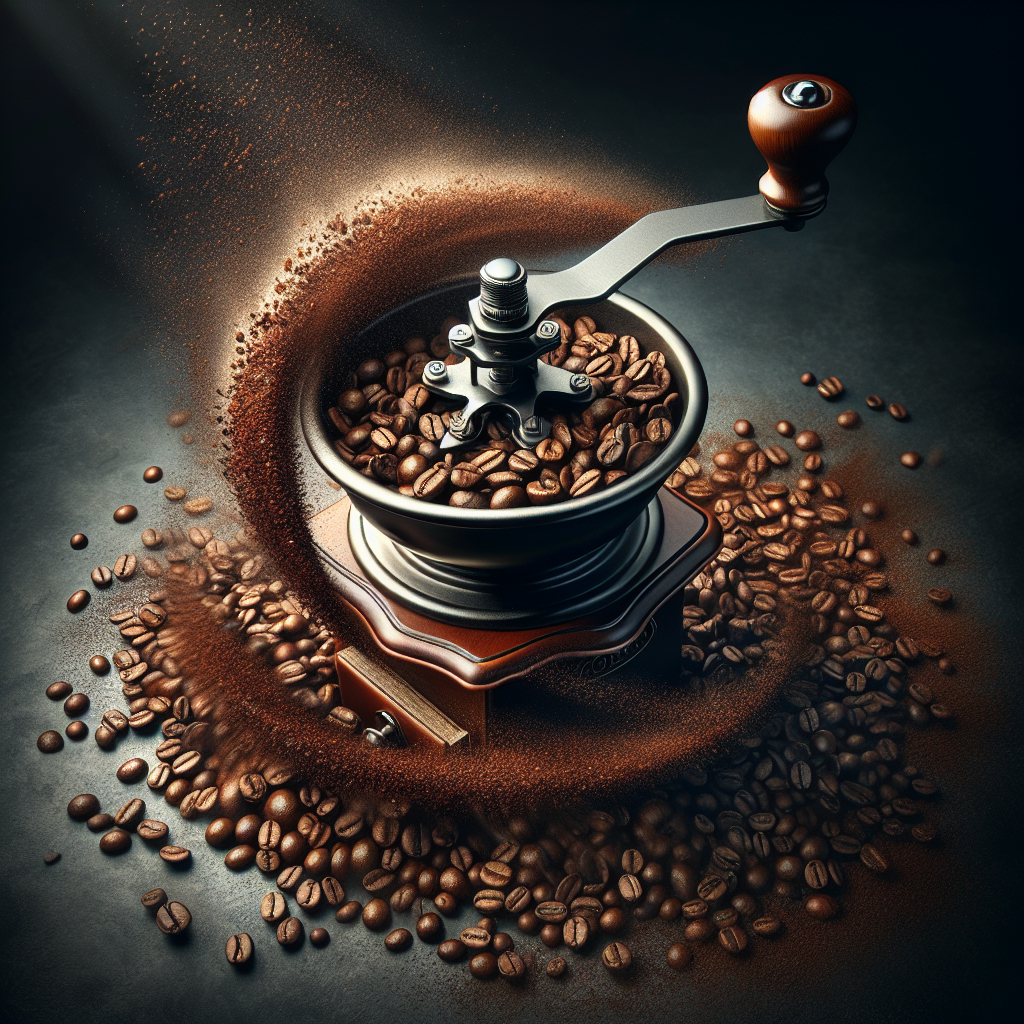“`html
Ultimate Guide to Coffee Grinders: Unlocking the Secrets to Perfectly Ground Beans for Every Brewing Method
1. The Importance of Coffee Grinders in Brewing
Enhancing your coffee’s aroma and flavor extraction starts with precise grinding. The grind size, whether fine, medium, or coarse, is vital for different brewing methods. Freshly ground coffee offers a more superior taste and texture compared to pre-ground coffee, making the choice to grind your own beans economically sound and beneficial for those passionate about their coffee’s quality. Uniform grinds ensure consistent brewing and highlight the intricacies of the coffee’s flavor profile.
For more detailed insights into different coffee drinks, check out our comprehensive guide. Your journey toward the perfect brew starts with understanding the basics of coffee grinding and the impact it has on your brewing experience.
2. Types of Coffee Grinders: Blade vs. Burr Grinders
When selecting a coffee grinder, you’ll encounter two main types: blade and burr grinders. Blade grinders are affordable and simple to use, but they often create uneven grinds which can affect the brewing process. Burr grinders, whether conical or flat, offer more precise and consistent grinds, essential for a well-balanced cup of coffee. The choice between blade and burr involves considering factors like heat generation, durability, cost, and maintenance.
3. Understanding Burr Grinders: Conical vs. Flat
Burr grinders come in two main forms: conical and flat. Conical burr grinders use two cone-shaped burrs to crush the coffee beans, which is beneficial for maintaining a consistent grind and managing heat. Flat burr grinders use two flat discs to achieve a uniform grind size. The choice between conical and flat burr grinders comes down to personal preference, grind consistency, and budget. To help you decide, we have reviews of popular models in each category.
4. The Rise of Manual Coffee Grinders: Quality on a Budget
Manual coffee grinders are becoming increasingly popular among coffee enthusiasts looking for an affordable yet high-quality option. These grinders are portable, easy to use, and can perform as well as some expensive electric models. Adjusting the grind size is usually straightforward, and they offer durable construction with minimal maintenance. Manual grinders are also more sustainable since they don’t require electricity.
5. Optimizing Your Grind Size for Every Brewing Method
The grind size plays a critical role in the brewing process, influencing the extraction and final flavor of your coffee. Here’s a useful table to help optimize your grind size for various brewing methods:
| Brewing Method | Ideal Grind Size |
|---|---|
| Espresso | Fine |
| Aeropress | Medium-Fine |
| Pour-Over | Medium |
| French Press | Coarse |
| Drip Coffee | Medium-Coarse |
Incorrect grind sizes can lead to over-extraction or under-extraction, affecting the taste of your coffee. To achieve the best results, regularly test and adjust your grind sizes. Also, consider the impact of water temperature and brewing time. For more versatile brewing, multi-purpose grinders can cater to various methods efficiently.
6. Features to Look for in a Coffee Grinder
When selecting a coffee grinder, consider factors such as consistency, adjustable grind size, and the chamber that collects ground coffee. A dosing mechanism allows for precise measurements, enhancing your brewing experience. Other important features include durability, user-friendly design, and ease of cleaning. Noise levels can also vary among grinders, so consider quieter models if that’s a priority for you. We offer in-depth reviews and insights into different models that fit a range of budgets and preferences.
Ready to enhance your coffee brewing experience? Explore our recommended coffee accessories here for more tips and product suggestions to complete your coffee setup. Enjoy the perfect grind and the perfect cup every time!
“`
Shop at Breville now!
https://breville.oie8.net/oqDqrE
Shop Coffee grinder at Amazon now!
Click here!





